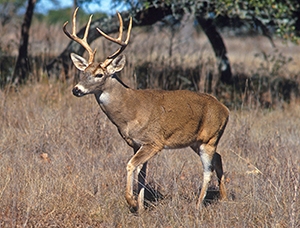Bambi’s adorable. He’s totally harmless, right? Maybe not. A growing number of scientists believe nothing – save bulldozers – is a greater threat to New York State’s forests than white-tailed deer.
Deer overpopulation, that is. With 1 million of the mammals in N.Y., more than 30 per square mile of forest, one-third of woodlands are having trouble regenerating. The deer simply devour young trees (like oak, maple, birch) so fast that older ones aren’t adequately replaced when they die.
The average adult deer eats about 3,000 pounds of greenery annually, which can be bad for biodiversity, and for humans.
Studies show that damage occurs with more than 20 deer per square mile, Jeffrey Corbin, associate professor of biology said. They reduce plant diversity, and where there aren’t many species of plants, there aren’t many species of animals.
“Also, diverse forests provide economic benefits – timber, recreation, flood reduction, water filtration,” he continued. “The Catskills save New York billions of dollars a year in water treatment costs.”
To mitigate the problem, scientists suggest regulated, commercial hunting.
“We aren’t exactly sure why populations have exploded in recent decades. But deer thrive where wilderness and suburbia meet, where agriculture and forest meet,” Corbin explained. “Also, human hunters, namely Native Americans, probably played a big role in controlling deer. So they have great habitat and not much hunting pressure.”
A sad result of this: Famine can occur when there isn’t enough vegetation to feed overlarge herds during winter months.
“Starvation is perhaps an even crueler fate than bullets,” Corbin said. “These deer populations are not only a threat to our forests, but to themselves. This really gives us a responsibility to do something.”


